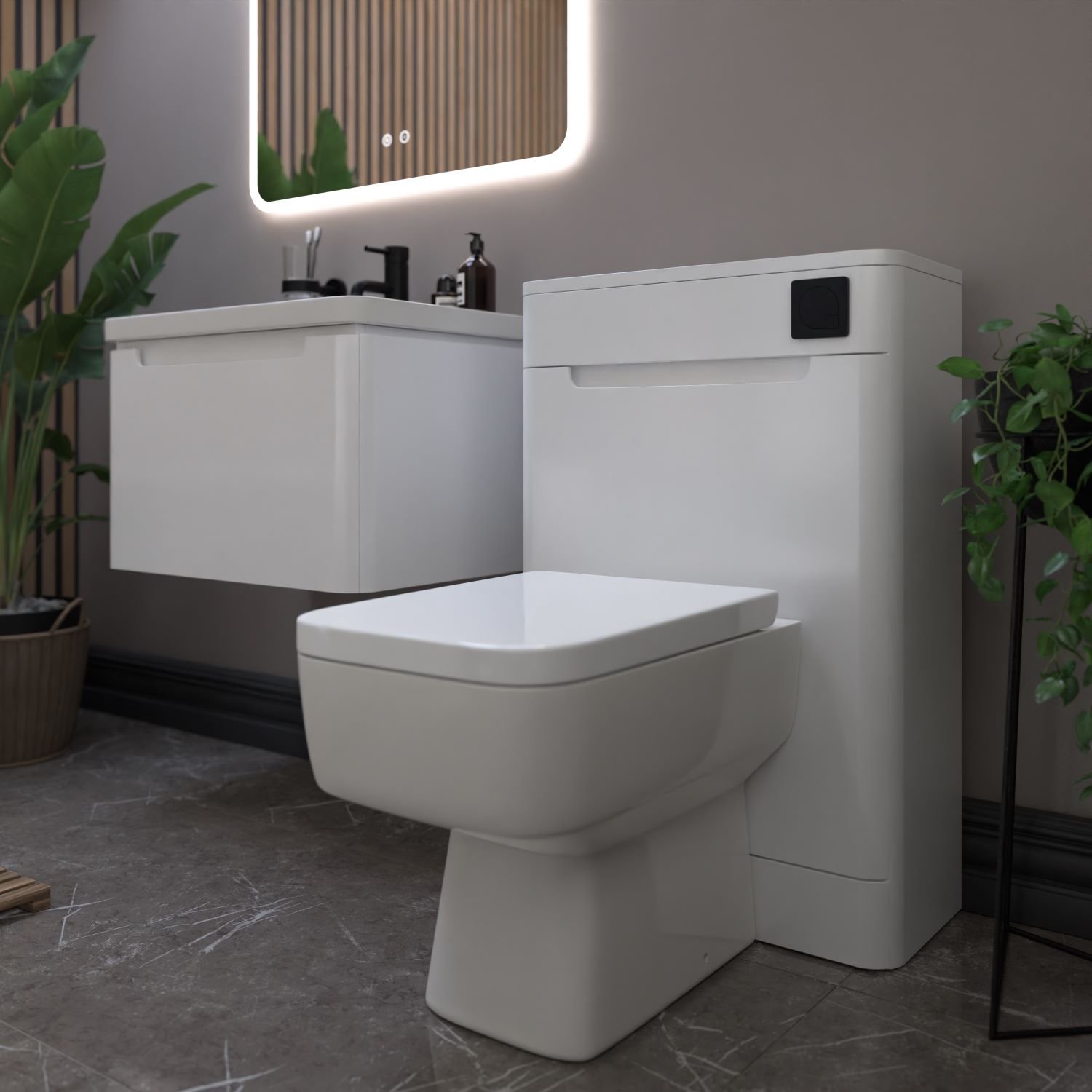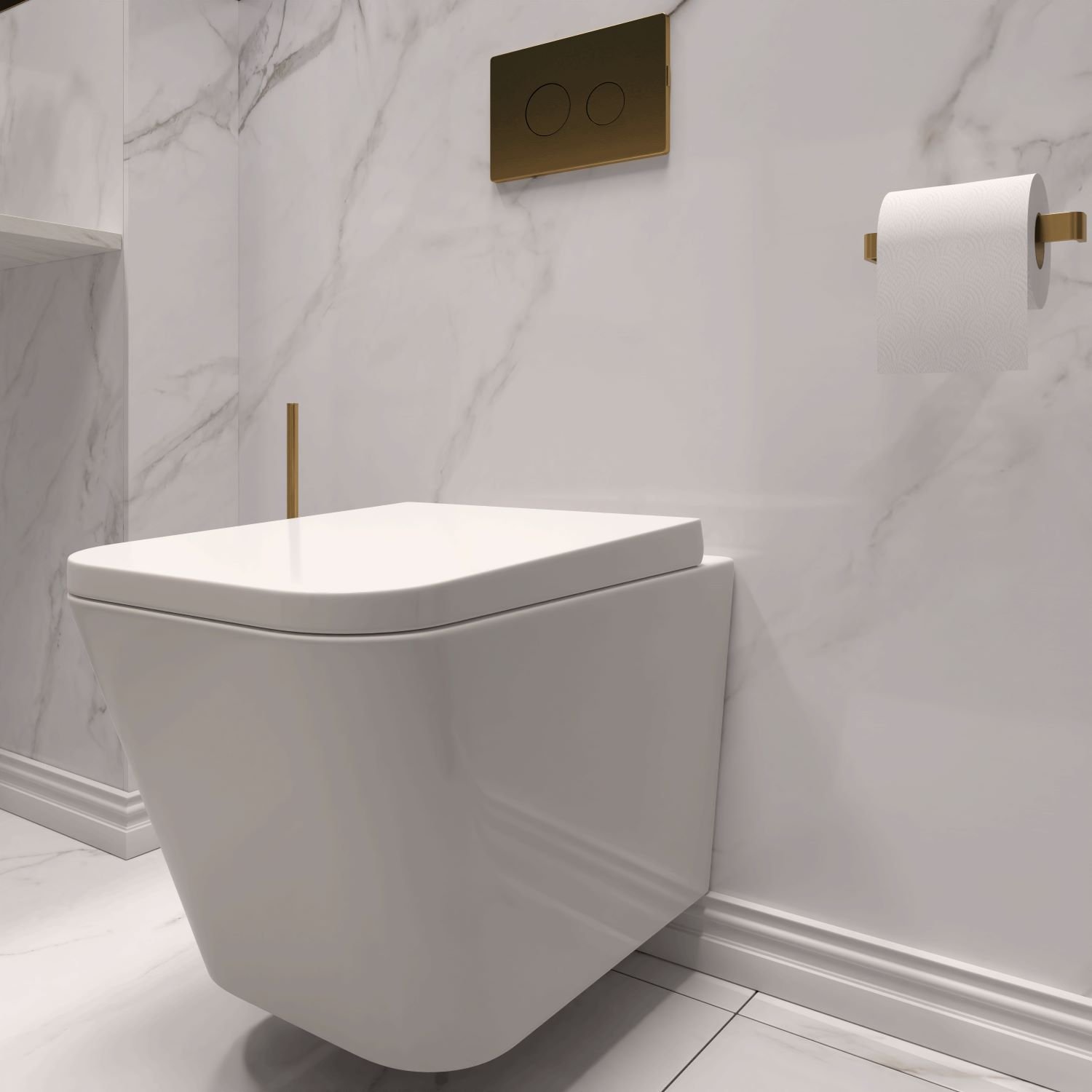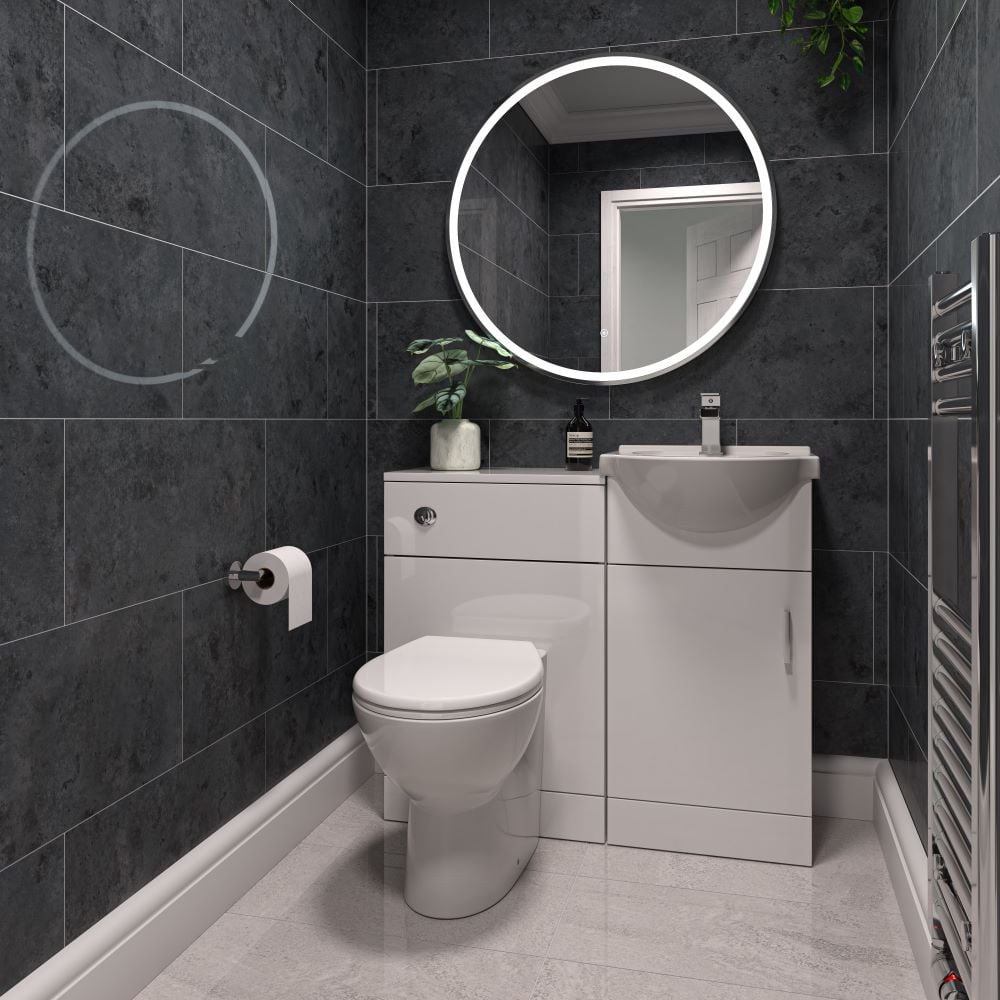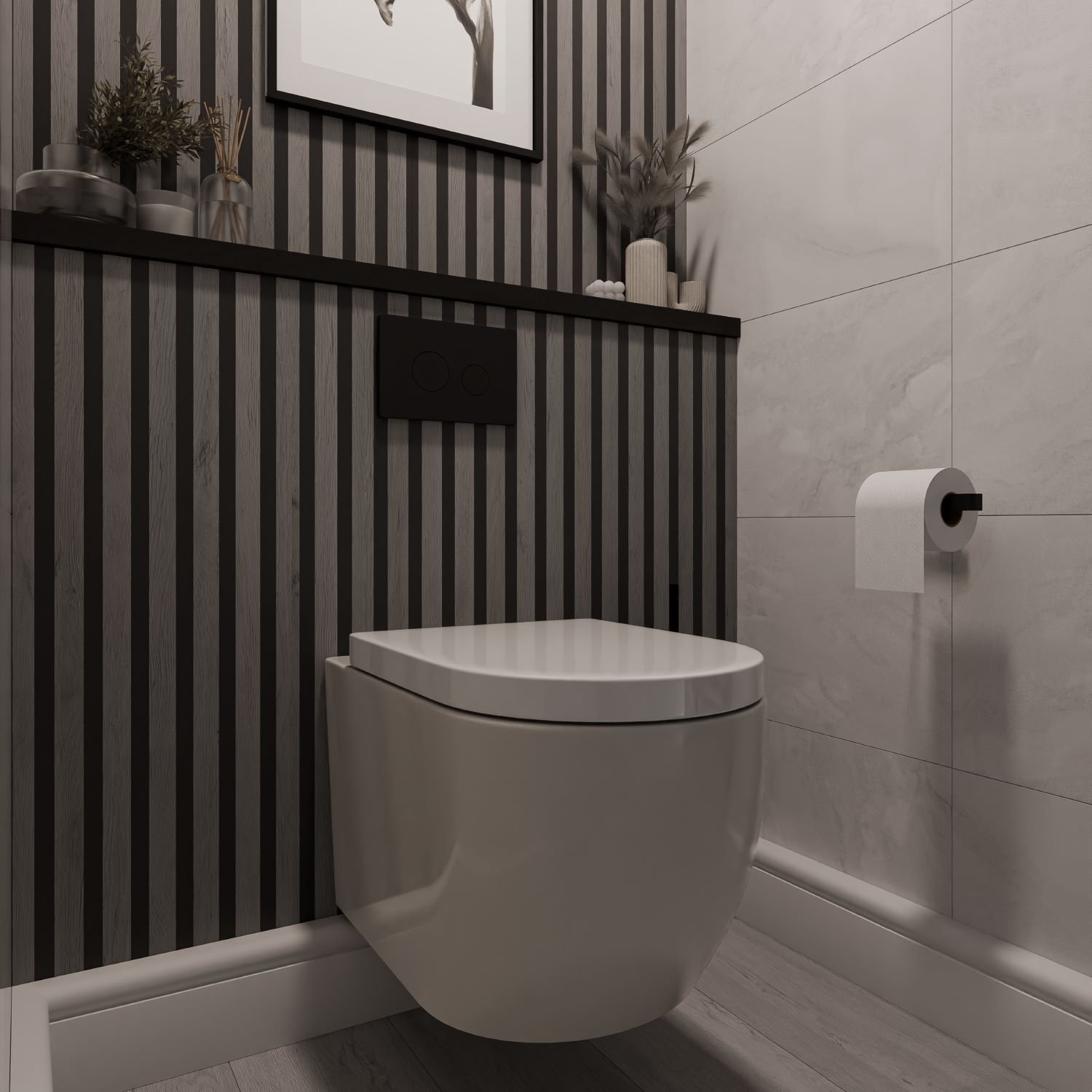What Size Toilet Seat Do I Need? How to Measure Your Bowl for a Perfect Fit
21st Jan 2025

There's nothing worse than a wobbly toilet seat – it's uncomfortable, inconvenient, and can even be dangerous if the seat detaches while you're using it.
If you've been putting off replacing your seat because you're unsure about the size or shape, don't worry – you're not alone. Measuring a toilet seat for a replacement might sound tricky, but it's actually a quick and simple process.
This guide will walk you through measuring your toilet seat in just a few minutes, with expert tips from Brian Toward, Chief Executive Officer (CEO) at Wholesale Domestic.
Contents
- What shape is my toilet seat?
- How to measure a toilet seat
- How to fit a toilet seat
- Frequently asked questions
What shape is my toilet seat?
While it might only be a subtle difference, toilet seats come in various shapes, and knowing which one your toilet has is key to finding the right fit.
Choosing the wrong shape can leave you with a seat that doesn't sit properly on your toilet bowl and feels awkward to use. Thankfully, identifying the toilet seat shape you need is easy.
Here are some of the most common shapes:
Square toilet seat

Square seats have a boxy design with clean lines, making them a popular choice for contemporary bathrooms. Their angular style complements the sleek, modern design of back-to-wall and wall-hung toilets with square-shaped bowls.
To check if you need a square toilet seat, look at the shape of your bowl. If it has defined corners and straight edges, it's likely designed for a square seat.
Round toilet seat

Round seats are shorter and more compact than other shapes. Their circular design is usually flush with the edge of the toilet, making them ideal for smaller bathrooms with limited space. These seats are a classic choice in older-style bathrooms with a more traditional setup.
Round seats are compatible with any standard round-front toilet bowl and are commonly paired with high and low level, short projection, and some close-coupled models due to their smaller design.
If your bowl has a shorter, circular shape, a round seat will provide the most comfortable fit.
For more tips, read our toilet buying guide.
D shape toilet seat

D shape seats combine a square design with rounded corners that widen into a straight, hinged back, creating a distinctive 'D' silhouette.
They tend to be more compact than some other toilet seat models, making them an excellent option for smaller spaces like cloakroom or en-suite bathrooms. Learn more about how to maximise space in a small bathroom here.
Their versatile design makes them a popular choice for bathrooms of all styles, offering a sleek, streamlined look that's compatible with any standard toilet.
Elongated toilet seat
Elongated seats have a longer design than standard models, with an oval shape that offers extra space and comfort when in use. They're great for larger bathrooms and are suitable for toilet models with longer bowls.
These seats are often used with close-coupled, wall-hung, and comfort-height toilets with an oval-shaped bowl.
Elongated toilet bowls are usually around 18.5 inches (47cm) in length, compared to a standard round bowl that's approximately 16.5 inches (42cm), so you'll need a suitable seat to avoid gaps.
To check if you need an elongated seat, measure the length of your toilet bowl. If it's longer than average, an elongated seat is likely the best choice for a snug fit.
How to measure a toilet seat
If your seat needs replacing, the first step is getting the measurements right. We've pulled together three easy-to-follow steps, so you'll be ready to replace your seat in no time.
What you’ll need
To measure your toilet seat, you’ll need:
- Measuring tape or ruler
- Notepad or your phone to jot down measurements
- Pen or pencil
Step-by-step instructions
Once you've got your tools ready, it's time to start measuring your toilet bowl. Here are three simple steps:
1. Measure the length of the seat
To measure the length of your toilet seat, place your measuring tape or ruler at the midpoint between the bolt holes at the back of the bowl (where the seat attaches).
Extend it straight down the centre until you reach the front edge of the toilet bowl – this is the length you'll need to look for when shopping for a new seat. Make a note of this measurement for later.
Brian says: "The length is one of the most important measurements when figuring out what size toilet seat you need, and getting this wrong will leave an uncomfortable gap. So, keep your tape straight and level to make sure your measurements are accurate.”
2. Measure the width of the seat
Next, measure the width of your toilet seat. To do this, place the measuring tape across the widest part of the bowl and record the distance from one outer edge to the other.
Brian explains: "Width is just as important as length when determining what size toilet seat you need. You’ll need to measure carefully to avoid a seat that overhangs or doesn't sit securely on the bowl."
“Most seats are around 14 inches (36cm) wide, but this can vary slightly depending on the shape.”
3. Measure the distance between the bolt holes
Finally, measure the distance between the bolt holes – the two holes at the back of the toilet bowl where the seat is attached. Place your measuring tape or ruler in the centre of one bolt hole and bring it across the centre of the other to get an accurate measurement.
"This step is often overlooked, but it's essential to ensure your new seat fits securely,” explains Brian. “The standard distance between bolt holes is about 5.5 inches (14cm), but some toilets may have slightly different spacing, especially if they're older. Double-checking this measurement helps you avoid ending up with a wobbly seat that doesn’t fit properly.”
Once you've recorded all three measurements, you'll have everything you need to confidently shop for a toilet seat replacement that fits perfectly.
How to fit a toilet seat
Once you've taken your measurements and found the perfect toilet seat, it's time to install it.
Follow these steps to get your new seat fitted:
- Gather your tools – You'll usually need a screwdriver and a wrench, but always check the manufacturer's instructions for any specific requirements.
- Remove the old seat – Start by unscrewing the bolts holding the old seat in place. If the bolts are stuck, you can apply lubricant to loosen them.
- Position the new seat – Line up the new seat with the bolt holes on the toilet bowl and check that it's sitting evenly.
- Secure the bolts – Tighten the bolts carefully. They should be secure enough to prevent the seat from moving but not so tight that you risk cracking the seat or bowl.
- Test the fit – Open and close the seat a few times to ensure the lid moves smoothly and the seat doesn't wobble.
Brian says: "Fitting a new toilet seat is pretty simple, but there are a couple of tricks that can make the job even easier.”
“Check that everything’s lined up properly before tightening the bolts, and don’t over-tighten them – as this not only risks cracking the bowl but can also make the seat wobble more. If the bolts are stiff, a quick spray of lubricant, like WD-40, can save you a lot of hassle. Take your time, and you’ll have it sorted before you know it."
Frequently asked questions
How long should a toilet seat last?
On average, your seat should last between five and seven years, but this can vary depending on the material, quality, and frequency of use.
While your toilet seat might not be the most glamorous part of your bathroom, it's still one of the most used. Over time, daily wear and tear can take its toll, and you'll eventually need a replacement.
Brian says: "A well-made toilet seat can last for years, but there are a few tell-tale signs that it's time for a replacement. If the seat feels loose no matter how often you tighten it, the surface is chipped or cracked, or the hinges are stiff or corroded, it's probably time for an upgrade."
Your chosen material will also affect how often you'll need to change your toilet seat, as some are longer-lasting than others.
"Plastic seats are lightweight and affordable, but they can wear down more quickly – especially in busy family households,” Brian adds.
“On the other hand, wooden seats are more durable but can be prone to water damage if not properly sealed. Soft-close seats also have more complex hinges, meaning they might break faster than standard models.”
Another factor to consider is hygiene. Even if your seat looks fine, it might need replacing sooner if the surface has become harder to clean or shows signs of discolouration. After all, a fresh, clean toilet seat always looks better!
How do you know what size toilet seat to buy?
Brian advises: "The best way to find out which size toilet seat you need is to measure your toilet bowl. You'll need to record the length, width, and distance between the bolt holes to avoid ending up with the wrong size."
"Measuring might seem like a hassle, but it's a simple process that saves a lot of frustration. If you skip this step, you risk having a seat that doesn't fit properly, which can be uncomfortable to use."
Are toilet seats universal?
While they may look similar, toilet seats aren't universal. They come in various shapes and sizes to match different bowl designs. Some measurements, like bolt-hole spacing, are usually the same – but variations still exist.
Brian says: "Don't assume one size fits all. Always check the dimensions of your toilet bowl before buying a replacement. A little effort upfront saves you from the hassle of returns or a poorly fitting seat."
Can I replace my toilet seat with a different shape?
"While you can switch shapes, it's not really recommended,” says Brian. “A toilet seat that doesn't match the bowl won't sit properly, which can create gaps that make it feel less stable. Certain toilets are more adaptable, as long as the bowl is a standard size, but toilets with an oval bowl will usually need an elongated seat.”
What if my toilet bowl isn’t a standard size?
Brian says: "If you've got an older or more unique toilet, you might struggle to find a pre-made seat that works without any gaps. But don't worry – there are still options for replacing your toilet seat. You should speak to a hardware store specialist to create a custom-made seat that offers the perfect fit."
Find the perfect toilet seat at Wholesale Domestic
Now that you know how to measure your toilet seat, it's time to replace that old, wobbly seat with something more comfortable. At Wholesale Domestic, we have a wide range of seats to suit every toilet.
If you're planning a full bathroom renovation, why not explore our collection of toilets and find a matching sink, bath, or shower enclosure for a fully coordinated look? Don't forget to check out our range of flush plates and bidets for the perfect finishing touches.
Need help finding the right fit? Contact us today, and our team will be happy to offer further advice. And for more bathroom inspiration, take a look at our blog.

 FREE delivery over £500*
FREE delivery over £500* Visit our showrooms
Visit our showrooms Finance options available*
Finance options available* Apply for a Trade Account
Apply for a Trade Account